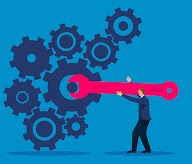Minimizing Conflicts
(Execution Excellence -"Ability to get things done" Series)
As we discuss the importance of developing project management skills to get things done in addition to functional expertise as we move up the career ladder, 80 % of the tasks are non-repetitive or project nature, and we may need to deal with many stakeholders who may not be directly reporting to us.
We discussed the relevance of defining outcomes, simplifying the complexity, holistic planning, big-picture orientation, insights on stakeholder outcomes, and reducing changes.
The next principle we can learn from project management is “minimizing conflicts.”
In a project environment, there is always uncertainty, which leads to conflict in ensuring timeline commitment, operating within budget, and delivering service/ product as per expectation. Being aware of this, seasoned project managers always focus on estimating the time and budget with all contingencies, giving them more power and a stress-free mindset when things go wrong.
In my earlier project experience, many times i made the mistake of underestimating the time and budgeting and got into conflict and stressful moments. Essential learning is the ability to predict some changes in advance and add some buffer in time and cost instead of looking at a straight line.
Also, project management insists on role clarity for all team members, performance expectations, and setting the right communication forum to discuss the issues, which i see as the proactive conflict management practices.
One of the studies says that conflict happens 91% of the time due to internal organization issues like lack of communication, underestimation of time, and role clarity rather than external issues like change in customer specification, macroeconomics, etc.
Project management focuses on minimizing conflict with contingency planning and communication processes.
How can the functional head apply this insight?
- Whenever you initiate a new task, spend more time estimating time and budget estimates with all possible contingencies.
- Define the roles and responsibilities of each member and set the performance expectations right at the beginning.
For example, as Human Resources head, while planning manpower budgeting for the financial year, if you spend quality time on the estimation of new recruit numbers, existing cost of retaining talent, market expectation on remuneration on new talent and its effect on internal with contingency will help you to get the proper budgeting approval from management and avoid the conflict later.
We often fail to anticipate changes, think situations are always straight lines, and underestimate contingency planning.
The key is most of the conflict comes on cost and timeline, which can be managed with proactive contingency planning.
Have a great week ahead.





















